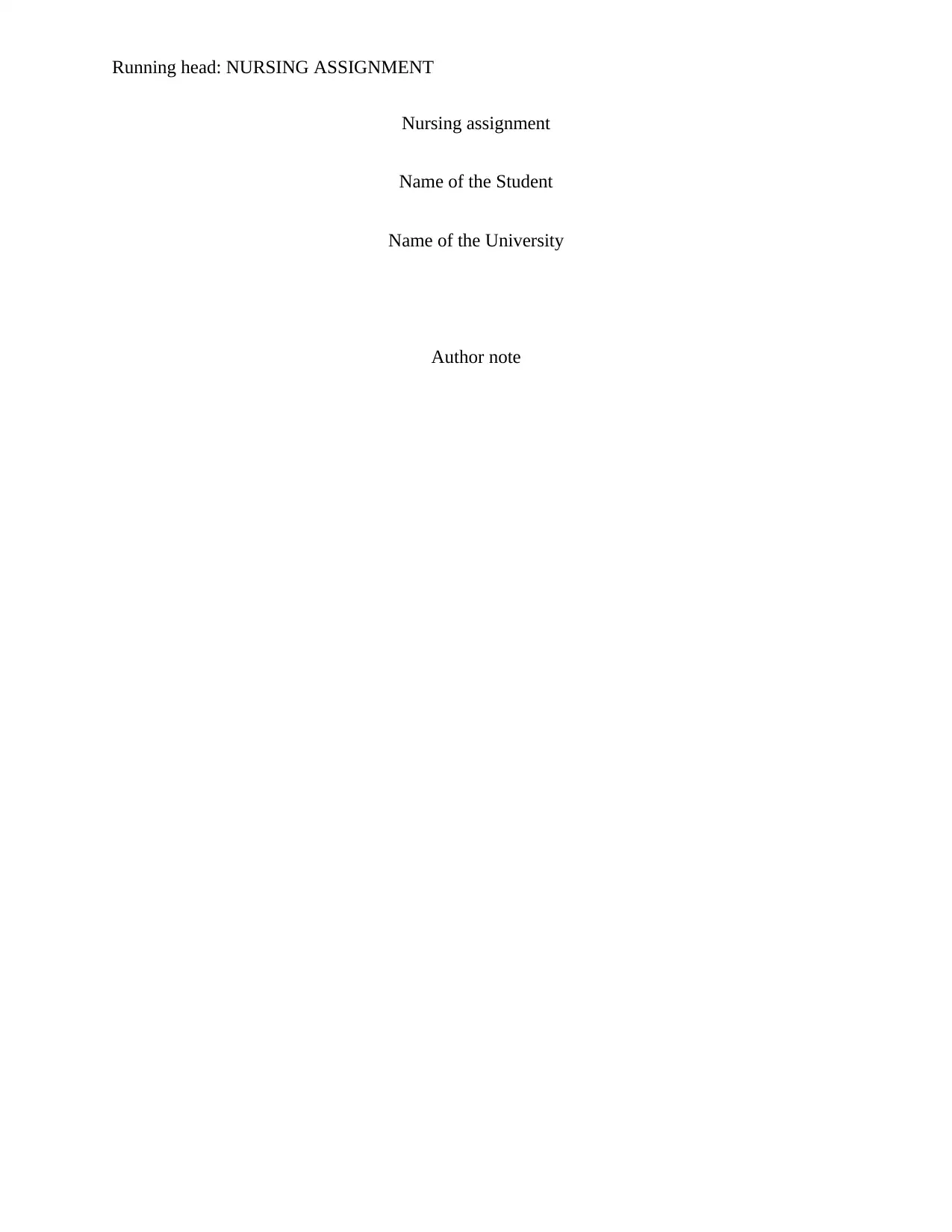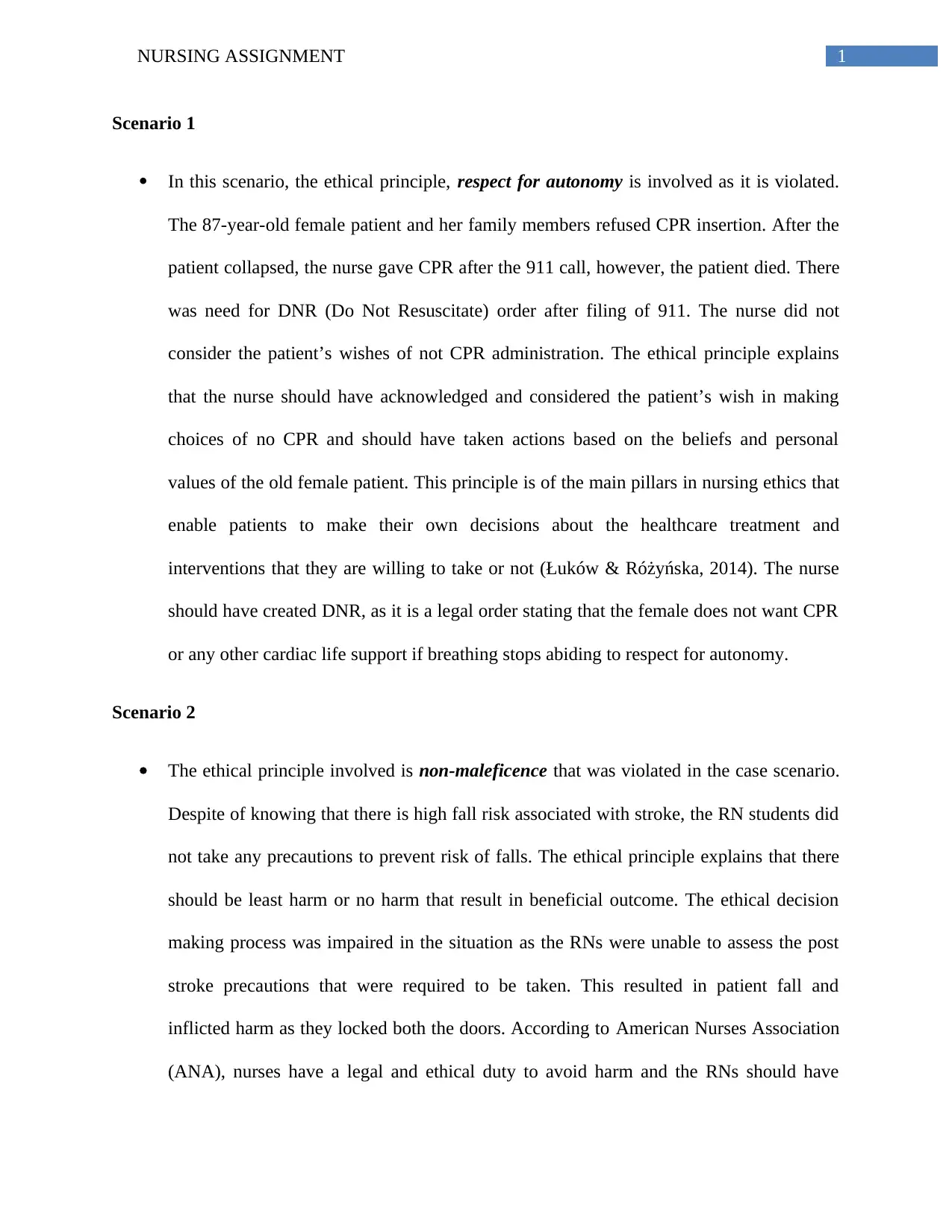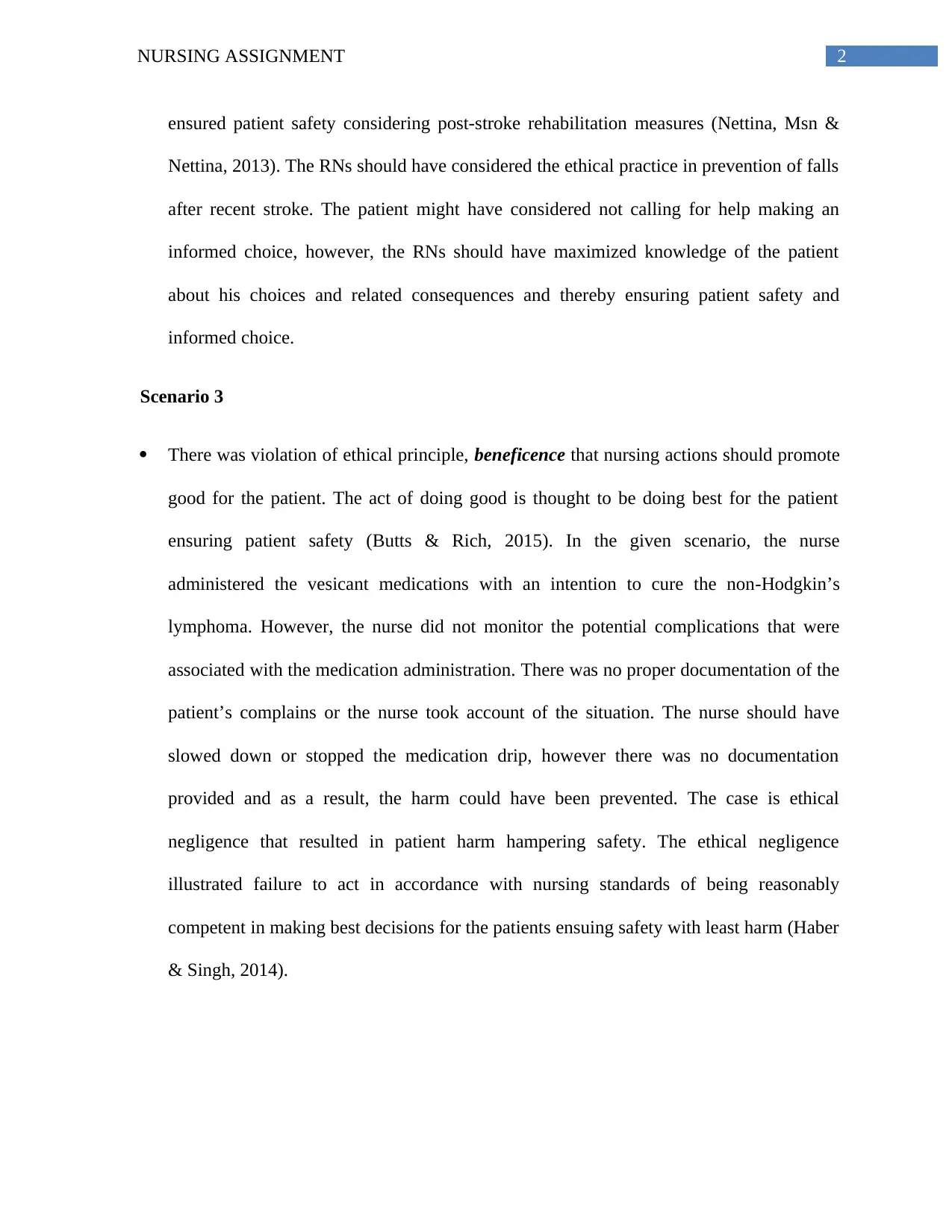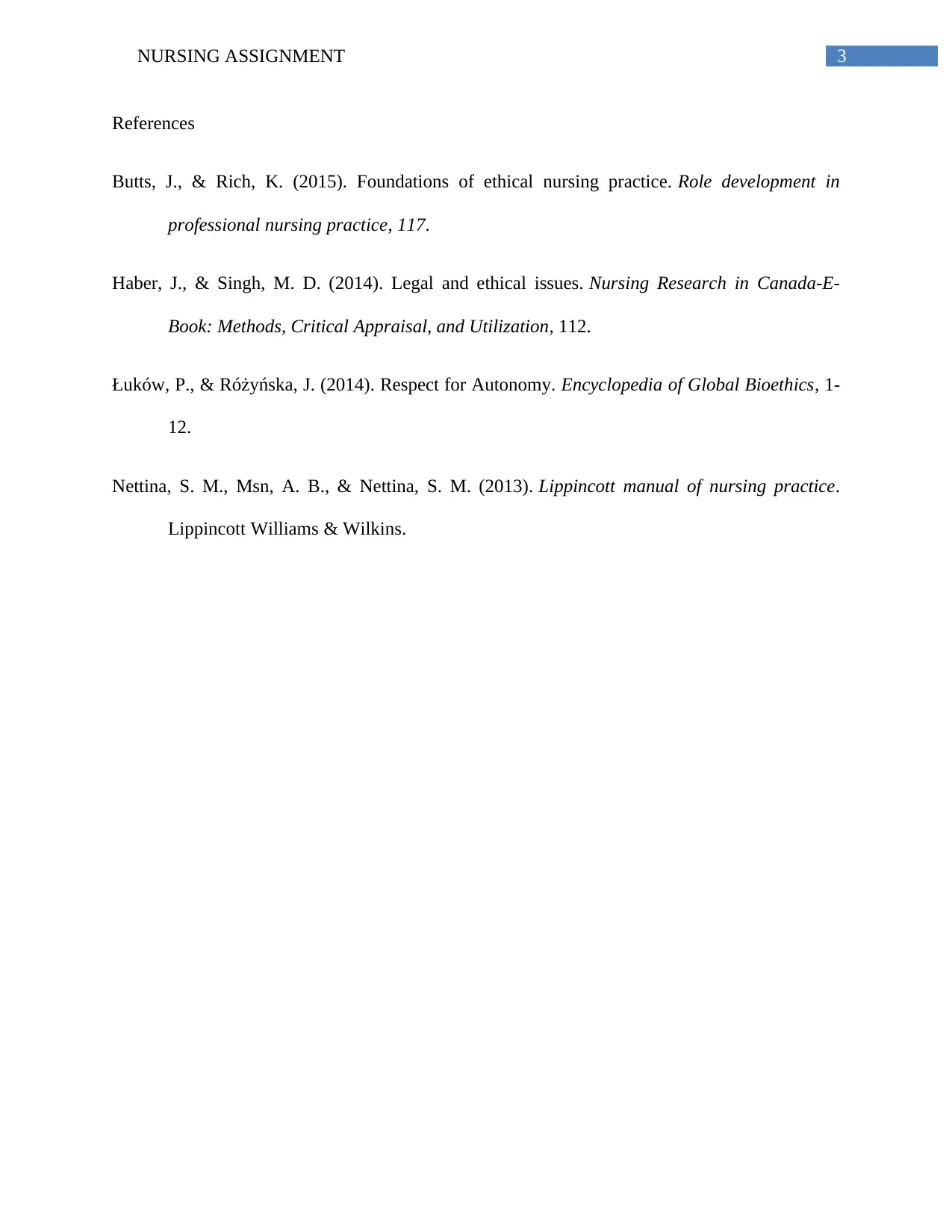Analysis of Ethical Principles in Nursing Case Studies Spring 2018
VerifiedAdded on 2023/06/10
|4
|731
|460
Case Study
AI Summary
This assignment provides a case study analysis of ethical principles in nursing, specifically focusing on scenarios involving violations of autonomy, non-maleficence, and beneficence. The first scenario examines a situation where a nurse violated a patient's autonomy by administering CPR against their prior wishes and family's instructions. The second scenario discusses the violation of non-maleficence when RN students failed to take necessary precautions to prevent a patient fall. The third scenario explores a breach of beneficence when a nurse administered vesicant medications without adequately monitoring for complications. The assignment highlights the importance of ethical decision-making and adherence to nursing standards to ensure patient safety and well-being. Desklib provides access to similar solved assignments and resources for students.
1 out of 4











![[object Object]](/_next/static/media/star-bottom.7253800d.svg)